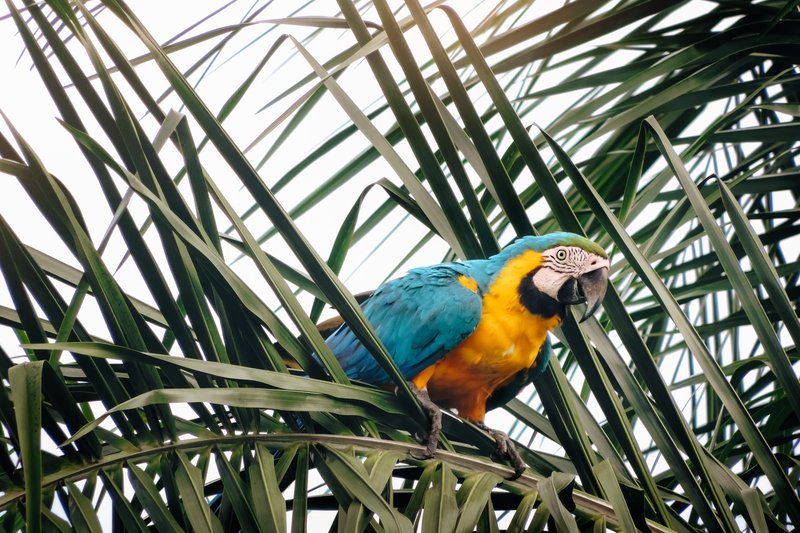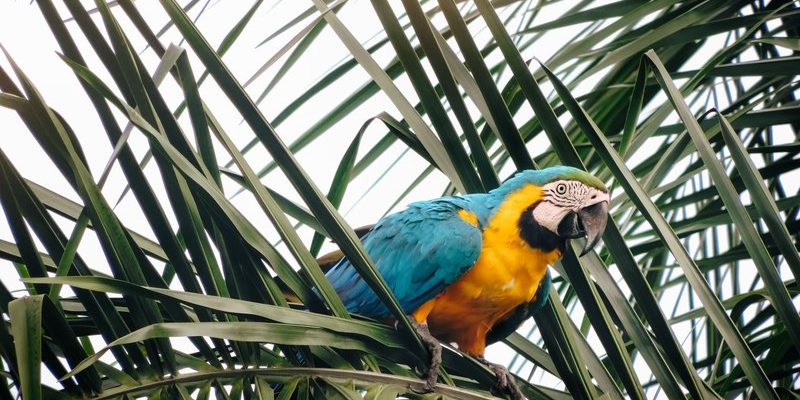
Honestly, the blue-and-yellow macaw is more than just a beautiful bird. It symbolizes freedom and intelligence, embodying traits that many cultures admire. Imagine flipping through an old storybook or sitting around a fire, listening to tales that celebrate the macaw’s role in the natural world. These birds are revered not only for their looks but also for their importance in their ecosystems. Let me explain how they’ve become a part of local lore and what they represent to different communities.
Cultural Significance of the Blue-And-Yellow Macaw
In many Indigenous cultures across South America, the blue-and-yellow macaw is seen as a symbol of beauty and strength. Often depicted in traditional art, these birds are celebrated for their vibrant colors that mirror the lush landscapes of the rainforest. For example, in the Amazon, locals regard the macaw as a guardian of the jungle, believed to protect the spirits of the forest. The sight of a flying macaw is more than just a visual delight; it’s seen as a good omen or a message from nature.
In addition, the blue-and-yellow macaw plays a vital role in ceremonies and rituals. Many communities incorporate macaw feathers in their traditional attire, representing a connection to nature and the spiritual world. Imagine a colorful parade with dancers wearing intricate outfits adorned with these feathers, celebrating their bond with the environment. It’s a beautiful way to honor the bird and invoke the strength and grace it symbolizes.
Folklore and Myths Surrounding the Macaw
Stories about the blue-and-yellow macaw often carry deeper meanings, teaching important lessons through folklore. One popular myth tells of a brave macaw who saved its flock from a lurking predator. This tale emphasizes the importance of courage and loyalty to one’s family. Just like in our lives, the macaw’s bravery inspires communities to stand together in the face of adversity.
Another fascinating story involves the macaw as a messenger between the heavens and earth. In some traditions, these birds are said to carry the wishes of the people to the sky. When someone spots a macaw, it’s believed that their thoughts and dreams are being heard by the spirits above. This connection to the divine illustrates how the macaw transcends being just an animal; it’s a symbol of hope and communication.
Conservation and Respect for the Macaw
With its vibrant presence, the blue-and-yellow macaw also highlights crucial conversations about conservation. Many local cultures recognize the importance of these birds in their ecosystems but face challenges due to habitat loss and illegal trade. Communities are beginning to work together to protect their feathered friends, showcasing their significance beyond folklore.
Efforts to preserve the macaw’s natural habitat involve not just government initiatives but also the voices of local people. Educational programs about the importance of these birds are spreading, encouraging respect for wildlife. By promoting conservation, communities can ensure that future generations continue to hear legends about the blue-and-yellow macaw. It’s all about building a sustainable future, where nature and culture thrive side by side.
Art and Literature Influenced by Macaws
The blue-and-yellow macaw’s impact reaches far beyond oral traditions. Artists and writers have drawn inspiration from these striking birds, capturing their essence in various forms. From paintings that burst with color to stories that weave rich tapestries of adventure, the macaw enhances cultural expressions.
Visual art often portrays the macaw in dynamic poses, showcasing its beauty and grace. These pieces not only celebrate the bird itself but also highlight the natural environment it inhabits. Writers, too, have used the macaw as a central character in children’s books, instilling values of friendship and courage. Through these stories, people of all ages can appreciate the macaw’s importance in both culture and nature.
Tourism and the Blue-And-Yellow Macaw
As interest in ecotourism grows, the blue-and-yellow macaw plays a significant role in attracting visitors to its natural habitat. Tourists flock to regions like the Amazon rainforest, hoping to catch a glimpse of these extraordinary birds. This phenomenon has economic benefits for local communities, creating jobs and funding conservation efforts.
However, while tourism can promote awareness and provide resources, it’s important to approach it responsibly. Sustainable tourism practices help protect the macaw’s habitat and ensure that visitors respect the wildlife. For communities, this means balancing the need for economic development with the preservation of their cultural heritage and natural surroundings.
In Conclusion
The blue-and-yellow macaw is truly a treasure that reflects the beauty of nature and the richness of local cultures. From being a symbol of bravery and hope in folklore to inspiring art and supporting conservation efforts, these birds play a vital role in the narratives and beliefs of many communities.
As we continue to learn about the blue-and-yellow macaw, let’s celebrate its presence in our world. Understanding its significance not only deepens our appreciation for these magnificent creatures but also inspires us to protect the habitats that nurture them. With every tale told and every effort made, we keep the spirit of the blue-and-yellow macaw alive, ensuring its legacy for generations to come.

